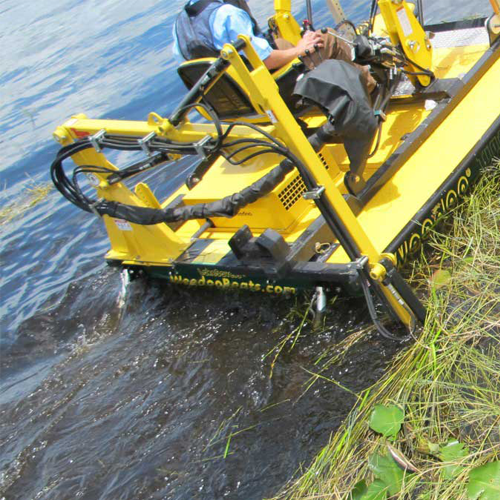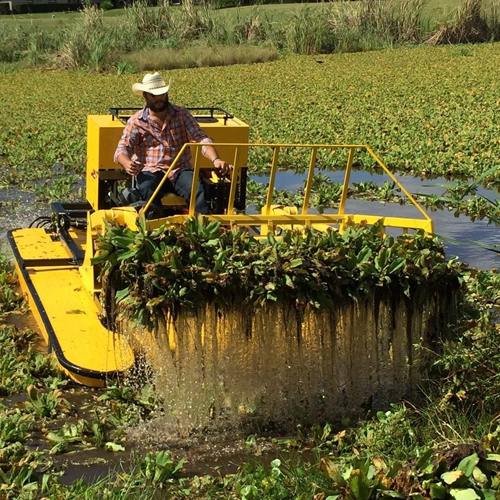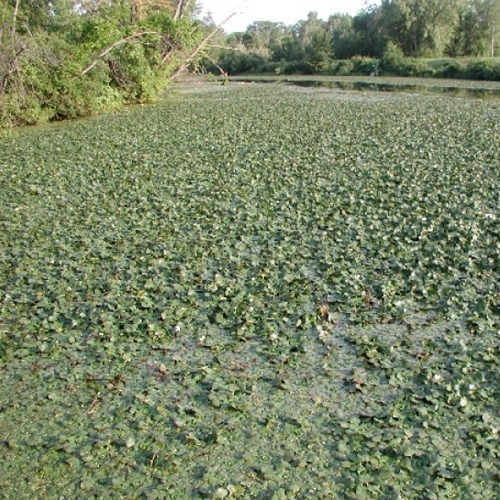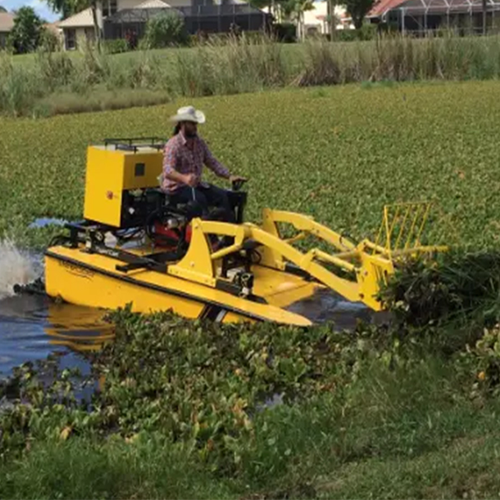Environmental Impact Report: Eutrophication and Aquatic Plant Management in Massachusetts
A brief summary describing successful lake management as well as problem identification and problem prevention procedures (includes case study reviews of lake management in Massachusetts).

SUMMARY OF FINDINGS
The lake management techniques reviewed here are grouped into two major categories: control of nutrients and control of aquatic plants. Control of nutrients is used to achieve control of algae and associated water quality problems (e.g., oxygen depletion, taste and odor), but as algae tend to be the symptom and nutrients constitute the real problem, the focus is on nutrient control.
For the control of nutrients the management techniques include non-point source control, point source control, hydraulic controls, phosphorus precipitation/inactivation, artificial circulation/aeration and dredging. The report compares these to the option of no nutrient management. Control of nutrients will not alleviate all aquatic plant problems, however, especially those rooted in or growing directly upon sediments. Since the plants themselves can be more than just a symptom, additional methods for direct control of aquatic plants are considered.
For the control of nutrients the management techniques include non-point source control, point source control, hydraulic controls, phosphorus precipitation/inactivation, artificial circulation/aeration and dredging. The report compares these to the option of no nutrient management. Control of nutrients will not alleviate all aquatic plant problems, however, especially those rooted in or growing directly upon sediments. Since the plants themselves can be more than just a symptom, additional methods for direct control of aquatic plants are considered.
Reviewed techniques for the control of aquatic plants include drawdown, harvesting, biological controls, benthic barriers, herbicides and algaecides, dyes and surface covers, and dredging. These are compared to the option of no management for aquatic plants. The impacts of nutrient and aquatic plant control techniques range widely depending upon the features of the system to which the techniques are applied, the extent of application, and the appropriateness of the technique to the situation. In most cases negative impacts are temporary and can be mitigated, but management of nutrients or aquatic plants may involve choices that require trade-offs between lake uses or specific groups of organisms in the lake. Most aquatic organisms have the ability to recover from the impacts of lake management, but the degree to which initial harm can be tolerated (under ecological or regulatory constraints) must be carefully considered when planning management actions.
Rare species and unique habitats may require special protection that limits management options or necessitates intensive mitigation effort. Some specific problems with lakes are not addressed here. Shallowness caused by infilling from external or internal sources over many years may be a problem with only limited links to current watershed inputs or in-lake plant problems. Dredging is the typical method of restoring water depth and is addressed in this document as a means for controlling nutrient inputs and plant growths. Less used but competing methods such as sediment digestion or raising the water level are not covered. Problems with specific nuisance fauna such as mosquitoes, invertebrate parasites that cause swimmer’s itch, leeches, or excessive goose populations are not addressed. Methods of resolving recreational conflicts among lake users constitute another timely area of activity that is beyond the scope of this document. The reader may seek initial help with such problems through the literature cited in this document or any of the referenced governmental agencies or consulting firms.
Rare species and unique habitats may require special protection that limits management options or necessitates intensive mitigation effort. Some specific problems with lakes are not addressed here. Shallowness caused by infilling from external or internal sources over many years may be a problem with only limited links to current watershed inputs or in-lake plant problems. Dredging is the typical method of restoring water depth and is addressed in this document as a means for controlling nutrient inputs and plant growths. Less used but competing methods such as sediment digestion or raising the water level are not covered. Problems with specific nuisance fauna such as mosquitoes, invertebrate parasites that cause swimmer’s itch, leeches, or excessive goose populations are not addressed. Methods of resolving recreational conflicts among lake users constitute another timely area of activity that is beyond the scope of this document. The reader may seek initial help with such problems through the literature cited in this document or any of the referenced governmental agencies or consulting firms.
Suggestions and guidelines for the use of each technique are presented in the text; however, the following recommendations apply generally to lake management:
- Prevention of eutrophication and excessive growth of aquatic plants is the most desirable approach. Particular emphasis is placed on limiting inputs of nutrients from the watershed and on the prevention of the establishment of populations of non-native plant species.
- Where prevention has not been successful or implemented in time to protect the lake, an integrated management plan should be developed on a case by case basis. Integrated management uses the most appropriate elements of a variety of lake management techniques to enhance the effectiveness of management over the long-term while minimizing adverse impacts. The choice of which techniques will work together appropriately will vary depending on water quality conditions, target species, the presence of rare species and protected habitat, and the goals of the program.
- Emphasize nutrient control for prevention of algal blooms. Excess algal growth is possible only if nutrient levels are adequate, and thus nutrient control is recommended as the best long-term strategy. Nutrient controls include non-point source controls, point source controls, hydraulic controls, phosphorus precipitation and inactivation, artificial circulation and aeration, and dredging.
- Choose aquatic plant control techniques with careful attention to both short-term and long-term effectiveness and possible adverse impacts. How much control as well as the type of control must be considered. Plants play a vital role in the ecology of lakes and some level of plant coverage is essential for a healthy lake. In all cases it is important to determine a reasonable level of control for aquatic plants. The need for frequent re-application of a technique should prompt an evaluation of alternative long-term approaches.
- The public should become involved in lake management in the early planning stages to assure greater acceptance of the chosen management plan. The public should also be invited to join in lake monitoring programs that will increase public awareness while providing valuable data on lake conditions from citizen volunteers. Involvement of all stakeholders in goal formulation, management plan development, and tracking of progress is in the best interest of the lake and its users.
- The effects of lake management actions should be studied as part of each management program, at a scale appropriate to the problem and lake. Much of the difficulty in selecting the appropriate lake management technique is due to the lack of organized, quantifiable data on the effectiveness and impacts of lake management projects in the past. Current data collection on effectiveness and impacts in Massachusetts is largely limited to cursory examination and anecdotal information, although some more intensive efforts have been made and Conservation Commissions now often require follow-up monitoring. Documentation of benefits and adverse impacts, or the lack thereof, with reliable data would be a great aid to future lake management planning and permitting.
- Recognize the limitations imposed by nature and human activities. Not all lakes are suited to all uses, and existing regulations will restrict management options in some cases. Lake management goals should be formulated with an understanding of the constraints under which management must operate, including natural features, competing uses, regulatory processes and economic reality.
The rest of the article can be found in a PDF file that you can safely download from our website.



